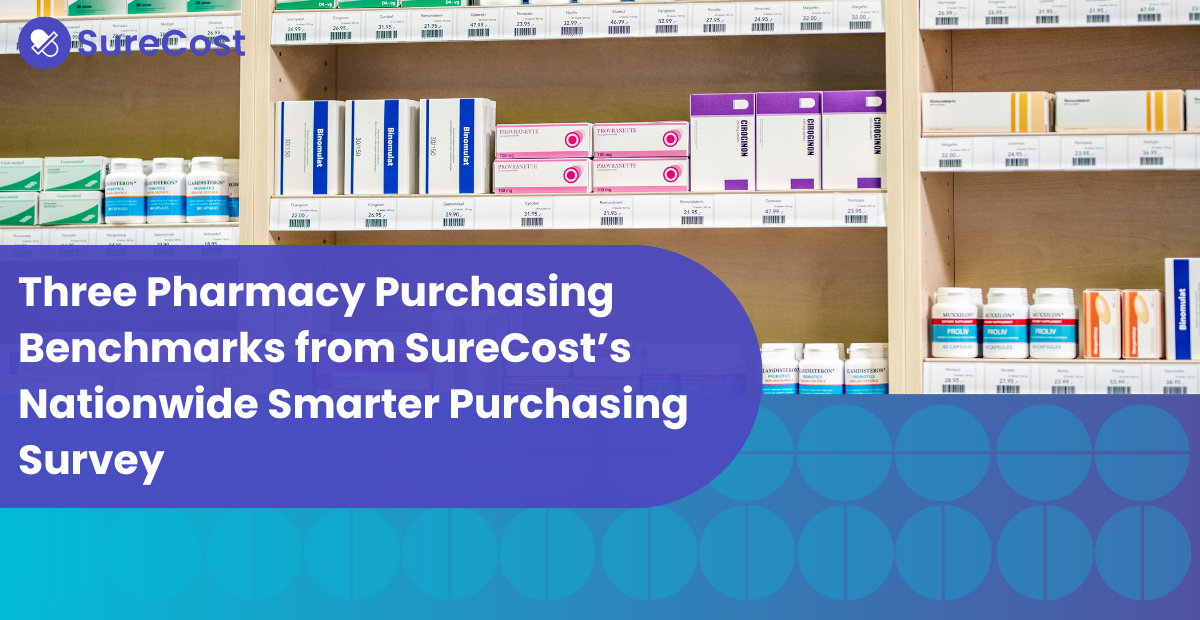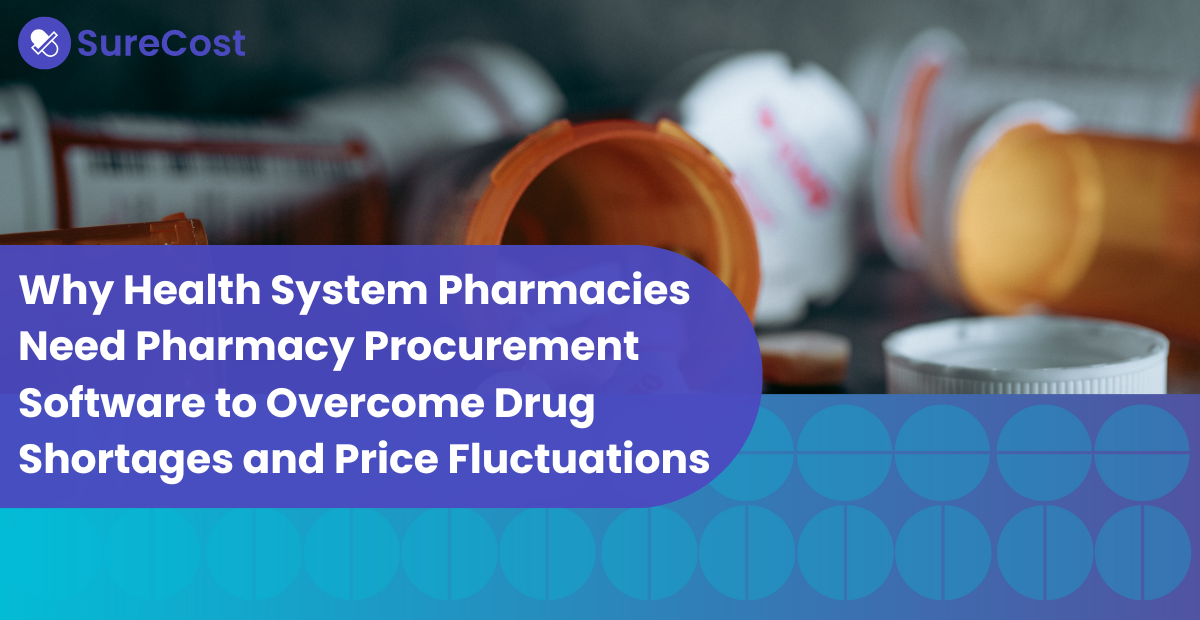Purchasing from the 200 most commonly prescribed medications is a well-known strategy for pharmacies. In fact, for many pharmacy professionals, it’s a given. But adhering to just the “Top 200” is costing them money. It’s also limiting their options, which means limiting their patients’ options when a drug shortage hits.
Analyzing purchasing data from over 5,000 pharmacy professionals across the country, SureCost’s latest Smarter Purchasing Report shows significant savings opportunities from purchases outside the Top 200. This blog post explains how much pharmacies can save by taking strategic advantage of the entire market. Then, we’ll explain the benefits beyond your bottom line before outlining a smarter purchasing solution to unlock these savings quickly and easily.
What the Top 200 Does Well
The “Top 200” refers to the most commonly purchased and dispensed generic prescription drugs on the market. Since these are the most in-demand products, pharmacies can use that list to gauge demand and ensure those items are in stock. Pharmacies can then manage inventory efficiently and minimize backorders. Most importantly, this approach helps ensure that the products patients are more likely to use will be in stock when they need them.
Shopping the Top 200 is also a convenient option. Finding the best prices for the right products is often lengthy and frustrating. It’s a web of brand names versus generics; primary, secondary and even tertiary vendors; different catalogs and order interfaces for each trader partner; multiple equivalents and many other data points to search and compare. It’s no wonder consulting one list for what to buy is so popular. In addition to practicality and patient-centered inventory, focusing on the Top 200 supports cost-saving vendor relationships. Pharmacies can negotiate better terms based on these products' frequency and high volume.
Why There’s Superior Savings Outside the Top 200
While Consulting the Top 200 has advantages, if it’s your pharmacy’s sole resource for purchasing intelligence, you’re missing out on savings. It’s not an “either/or” choice. This is about “both/and” when it comes to where you find products.
As the Smarter Purchasing Report details, 73% of the savings reported by pharmacies came from purchases made outside the Top 200. These pharmacies also reduced their cost of goods sold (COGS) by an average of approximately 11% through purchasing outside the Top 200. At that rate, a pharmacy with an annual purchasing volume of $3M saves roughly $327K annually.
Unlocking savings beyond the Top 200 also opens up a broader range of products, which is crucial as drug shortages continue to rise. A single out-of-stock item can affect a patient’s health and their trust in their pharmacy. It’s risky to design your purchasing strategy around the same list of products every other pharmacy relies on. To reduce out-of-stocks, pharmacies need to diversify their vendor portfolio. They don’t just add additional vendors to choose from when a shortage hits; that wider vendor portfolio opens up alternative products.
Purchasing outside the Top 200 makes for smart financial sense and responsible patient care. In addition to benefiting patients and the pharmacy’s bottom line, a wider range of products from more vendors opens up bulk discounts and rebates from those pharmacies. Since those vendors aren’t contending with the same market pressures, they’re more open to negotiating better terms with pharmacies.
By shopping beyond the Top 200, pharmacies access a niche market with less price competition. Its suppliers maintain healthier profit margins, translating to significant savings opportunities and reduced pharmacy costs. However, pharmacies also need a way to navigate this expanded market efficiently.
How to Effectively Shop Beyond the Top 200
A wider range of purchasing options means greater savings and more products. It also means more purchasing data to sift through. As mentioned above, the purchasing ecosystem is opaque by design. It’s hard enough to compare and submit purchase orders from 200 items. If you’re accessing even more of the market, you need a solution to navigate it efficiently. Otherwise, you may save on products but lose money and time searching for them.
To make the most of the entire market—the Top 200 and beyond—pharmacies should leverage a smarter purchasing solution that consolidates pricing data from all vendors: primary, secondaries, purchasing groups, catalogs, availability, updated prices, specials, etc. That way, they can select from thousands of options without a loss in time or productivity.
By leveraging the right technology—a single source of truth for purchasing—teams can compare products across their entire vendor portfolio. Then, they upload a single purchase order through one interface; there’s no more shifting between catalogs or juggling websites.
At the same time, the system monitors for compliance with primary vendor agreements and reveals better purchasing options. That includes savings within the Top 200. In fact, on average, SureCost approximately $49K each year within the Top 200 through a smarter purchasing solution.
An Integrated Solution for Smarter Purchasing
With a purchasing strategy that harnesses the entire market and a smarter purchasing solution which puts the market at their fingertips, pharmacies find new purchasing opportunities. They save more and ensure patients have the products they need. They also avoid losing hours to the purchasing process or buying outside the terms of their compliance.
The benefit of purchasing outside the Top 200 is just one part of smarter purchasing. The 2024 Smarter Purchasing Report outlines additional findings around:
- High costs of hidden vendor substitutions
- Increases in COGS due to sudden reorders
- Consistent GPO price adherence
- Ensuring accurate value of received goods
The report also shares how successful pharmacies meet challenges like drug shortages, rising staff shortages and complex DSCSA regulations.
.png?w=500)



.png)


